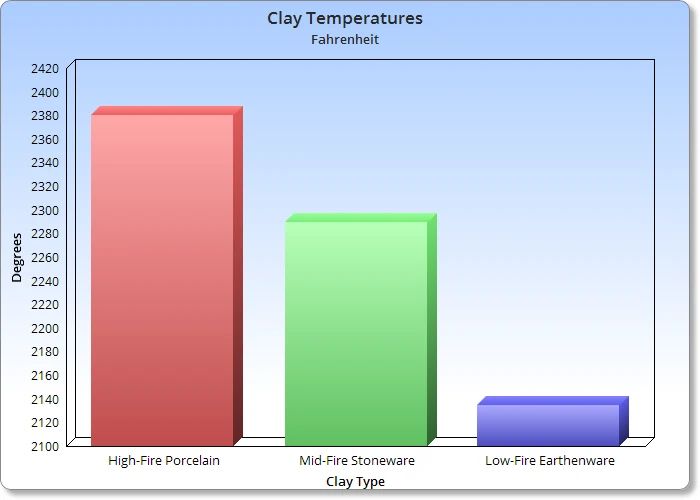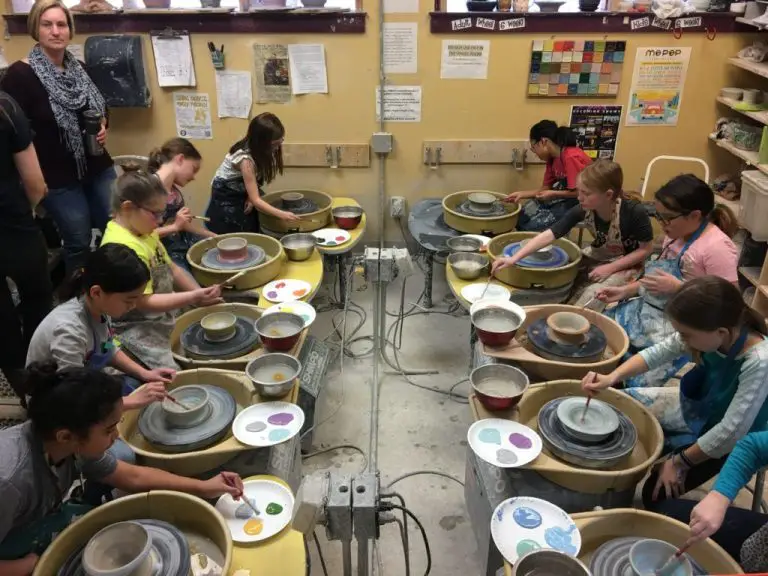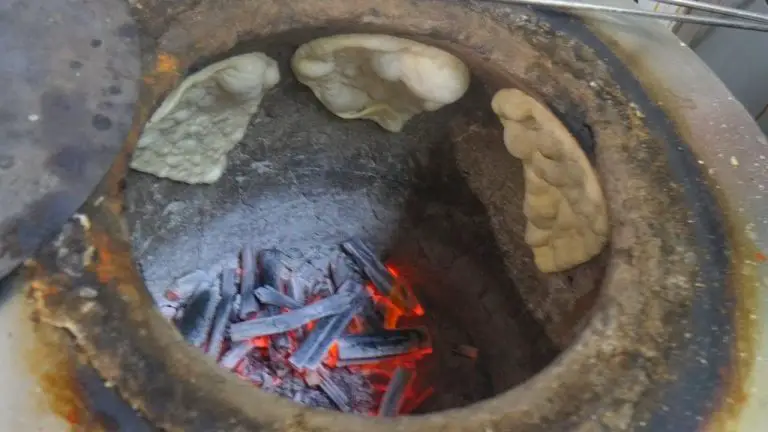Choosing The Right Clay: A Comprehensive Guide
Clay is one of the most versatile and commonly used art mediums. The history of clay as an artistic medium dates back thousands of years to some of the earliest human civilizations. From prehistoric pottery and sculpture to the proliferation of porcelain during the Tang Dynasty, clay has long been used to make both functional and decorative objects.
Today, clay remains a popular choice for artists and hobbyists working in ceramics, pottery, and sculpture. With the wide variety of clays available, choosing the right type of clay is one of the most important decisions an artist makes. The clay body has a significant impact on the look and feel of finished pieces. Using clay suited to your project, skill level, and artistic goals will help ensure success.
This comprehensive guide examines the major categories and properties of ceramic clays. It provides key factors to consider when selecting clay for specific applications and finishing techniques. Following the advice in this guide will give artists, both novice and expert, the knowledge to confidently choose the optimal clay for their creative visions.
Properties of Clay
Clay has several key properties that determine its suitability for pottery and ceramics. The three most important properties are plasticity, porosity, and shrinkage rate.
Plasticity refers to a clay’s ability to be shaped and molded without cracking or crumbling. High plasticity allows potters to throw thin-walled vessels on the wheel and sculpt intricate details. Ball clays have very high plasticity due to their fine particle size and high kaolinite content. Source
Porosity is a clay’s ability to absorb water. Higher porosity leads to more absorption, which can be desirable for sculpting but can cause cracking during drying and firing. Porosity depends on the clay composition and particle size. Very porous earthenware clays may need a filler added to reduce absorption.
Shrinkage rate is the amount a particular clay body shrinks during the drying and firing process as the water evaporates. Excessive shrinkage can lead to cracks and distortion. Stoneware and porcelain shrink less than earthenware due to their denser particle structure. Shrinkage rate can be adjusted by adding grog or sand.
Major Clay Types
There are several major types of clay used in pottery and ceramics. The main types include earthenware, stoneware, porcelain, and terracotta. Each clay has distinct properties, uses, and firing temperature ranges.
Earthenware
Earthenware is a soft, porous clay that fires at lower temperatures, between 1700°F and 2100°F. It can be easily scratched with a knife. Earthenware retains water and is less durable than stoneware or porcelain. It’s commonly used for flower pots, decorative pieces, tiles, and art pottery. The clay can result in a rougher surface but accepts colored glazes well.
Stoneware
Stoneware clay is dense, nonporous, and fired between 2200°F and 2400°F. According to Wheel and Clay, stoneware resists scratches and fracture damage better than earthenware. It provides a smooth finish and maintains its strength when fired. Stoneware is often used to produce functional pottery like mugs, plates, and food containers. The higher firing temperature results in a more vitrified and watertight product.
Porcelain
Porcelain clay fires at extremely high temperatures up to 2640°F. It’s highly vitrified, nonporous, and incredibly hard and durable. Porcelain has a glass-like surface when glazed and fired. It’s commonly used for tableware, art ware, and decorative items. However, the high firing temperature requires more energy consumption.
Terracotta
Terracotta is an unglazed, porous earthenware clay. It’s typically fired at temperatures below 2200°F. The clay has high iron content, giving terracotta its distinctive reddish-orange color. It’s often used for flower pots, sculptures, tiles, and ovenware that can withstand high temperatures. Unglazed terracotta is not watertight but provides a unique earthy finish.
Clay Bodies
A clay body refers to the blend of different clays and other materials that make up a clay for pottery. Clay bodies are formulated to achieve specific qualities in the finished piece, such as texture, color, firing temperature, and more. Potters have a few options when it comes to sourcing clay bodies:
Pre-mixed clays are blended by manufacturers and sold ready to use. These offer consistency and convenience, since the clay properties and firing results will be the same from batch to batch. Some common pre-mixed clay bodies include Stoneware, Porcelain, Terracotta, and Earthenware.
Self-mixing involves purchasing raw materials like clays, feldspar, and grog and blending them yourself using recipes. This allows for greater customization and control over clay properties. Popular recipes for self-mixed bodies include a versatile Cone 10 Stoneware, smooth Porcelains, and coarse Terracotta blends.
The choice between pre-mixed and self-mixing depends on factors like availability of materials, desired results, skill level, and artistic goals. Both methods allow potters to achieve high quality clay suited for their needs.
Choosing Clay for Function
When selecting clay, it’s important to consider the function of the finished piece. The type of clay you choose can impact the durability, strength, and aesthetic qualities of your work.
For tableware like plates, bowls, cups, and serving dishes, you’ll want a strong, vitreous clay that can withstand repeated use. Porcelain is a popular choice for high-end tableware because it’s very dense and non-porous, providing excellent durability. Stoneware is another good option, providing strength while allowing some beautiful glaze effects. Earthenware clays are more porous and prone to chipping, so they may not hold up as well over time.
For decorative pottery like vases, figurines, and wall hangings, you have more flexibility. While porcelain and stoneware are still great choices, you can also consider terra cotta for a traditional look or colored clays for unique visual effects. The demands for strength are lower since these pieces see gentler use.
For sculpture, strength may not be the priority over workability and aesthetic qualities. Oil-based clays like plasticine allow extensive sculpting detail that would be difficult in stiff, dense clays. Polymer clays can be shaped at room temperature then hardened in a home oven. And clays with exciting colors or textures can become a visual focus in sculptural works.
For tile, the clay body needs to be very resistant to deformation and moisture absorption. Porcelain and stoneware clays are most common for tile since they can be formed into thin, lightweight pieces while remaining strong after firing. Terra cotta is another traditional tile material because of its low cost, accessibility, and durability.
Choosing Clay for Firing Method
A key factor in selecting the right clay is considering the intended firing method and temperature. Clays are formulated to withstand different ranges of heat before vitrifying. Choosing a clay compatible with your kiln or firing method is crucial.

Low-fire earthenware clays, like terra cotta, are fired between 1800-2100°F. They can be fired in electric kilns and do not require as much heat. High-fire stoneware clays are fired between 2200-2400°F and require more heat, so are typically fired in gas kilns. Porcelain clays must be fired up to over 2300°F to fully vitrify.
Specialized firing methods like raku and pit firing also have specific clay requirements. Raku clays need to withstand quick heating and cooling cycles. Pit fire clays require high heat resistance. Selecting the proper clay will ensure it can withstand the environmental conditions and temperatures of the firing process.
Consult manufacturer specifications when selecting clay for your intended firing method. Using a clay body rated for higher temperatures than your process allows flexibility. However, using a clay with too low of a rating can lead to underfiring. With careful planning, you can find the right clay to match your firing capabilities.
Choosing Clay for Skill Level
When selecting clay, it’s important to consider the skill level of the artist. The type of clay you choose can make projects easier or more difficult depending on experience.
For beginners and kids, an air-dry or polymer modeling clay is a good choice. Air-dry clays like Hey Clay or Crayola Model Magic don’t require firing and dry at room temperature. Polymer clays like Sculpey are easy to condition and bake at low temperatures. These clays are forgiving and fun to work with for starting artists.
Intermediate artists may move on to pottery clays like stoneware or porcelain. These clays require wedging and proper drying before firing at high temperatures in a kiln. They can be more difficult to center and shape evenly on the pottery wheel. However, they produce durable finished pieces.
Advanced ceramic artists may enjoy specialty clays like raku or paperclay. Raku firing involves removing pottery from the kiln while red-hot for beautiful cracked glazes. Paperclay contains cellulose fiber so it can be sculpted thicker without cracking while drying. These unique clays allow more experienced artists to create distinctive effects.
The right clay for any artist depends on their level of skill and experience. While polymer and air-dry clays are great for beginners, pottery clays offer more versatility for intermediate and advanced artists ready for the challenges of higher-fire techniques.
Texture and Special Effects
The texture of clay can have a big impact on the finished look and feel of pottery pieces. Clays come in a wide range of natural textures, from ultra-smooth to very gritty. There are also options for adding textural elements and visual interest:
Smooth, silky clay bodies result in pottery with a clean, refined finish. These are great for throwing on the wheel and pulling up tall cylindrical forms. Standard stoneware clays often have a smooth, creamy texture when wet. Porcelain clays are extremely fine and silky.
Sandy textures add grip and friction for handbuilding and sculpting. The tiny grog particles provide a toothy feel. Sandy clays are easier to bond attachments and add texture to the surface. Standard earthenware clays tend to have more natural grit.
Colored clays naturally contain mineral pigments like iron oxide, resulting in terra cotta red, buff, brown, and grey bodies. These earthy tones can make beautiful patterns when blended together. No glaze is required.
Speckled clays have contrasting flecks of color blended throughout the base clay. Popular options include black, white, and red speckles. The spots create visual interest when left unglazed.
Grogged clays have particles of harder material like quartz or ceramic shards added to the base clay. The grog gives the clay more tooth and texture. Grogged clay is resistant to shrinking and cracking while drying and firing.
There are also textured commercial clay blends designed for special effects like cracking. These unique bodies expand and contract at different rates during firing, creating built-in textures.
Sourcing and Buying Clay
When it comes to sourcing and buying clay, you have a few options:
Brick and Mortar Shops
Local pottery or art supply stores are a great place to buy clay, especially when you’re just starting out. The benefit of shopping in person is that you can see and touch the clay before buying. Staff at these stores are often knowledgeable and can provide recommendations. Some things to look for are freshness of stock, selection of clay types, and whether they sell clay in smaller quantities for beginners. According to Soul Ceramics, buying clay from a local store also helps support small businesses in your community (1).
Online Retailers
Online retailers like Artist Corner provide a wide selection of clay that can be shipped directly to your door (2). This can be more convenient than traveling to a physical store. You can shop clays from different manufacturers all in one place. Do some research to find a reputable online ceramic supplier with reasonable shipping rates and good customer service. The drawback is not being able to touch and inspect the clay before purchase.
Buying in Bulk
If you are an experienced potter that goes through a lot of clay, buying 25 lb or 50 lb bags in bulk can save money. Check manufacturer and distributor sites like Alibaba.com to find bulk pricing on large quantities of clay (3). Keep in mind the effort of transporting and storing the clay yourself.
Caring for Clay
Proper storage and care is essential for keeping clay in optimal condition for use in pottery projects. Clay is vulnerable to drying out and contaminants that can ruin the consistency and workability. Follow these tips for caring for clay:
Clay should be stored in a sealed plastic bag or airtight plastic container. Keep it in a cool, dark place to prevent moisture loss. Avoid temperature extremes. According to PotteryHow, “Knowing how to store clay properly is a fundamental skill that ensures your clay will be preserved and ready to use when you need it.”
If clay does start to dry out, it can be rehydrated by kneading in small amounts of water. Work the water through the clay gradually until it regains a smooth, flexible texture. Let the rehydrated clay rest for a full day before using.
Be very careful to avoid contaminants when working with clay. Even small amounts of dirt, dust or food particles can alter the chemistry and ruin clay. Always have clean hands when handling clay. Work on a clean surface. Store clay away from contaminants. Proper care will maintain the purity and viability of clay.


